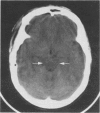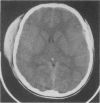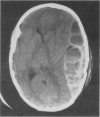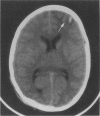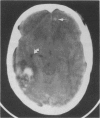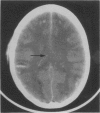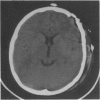Abstract
In a five year period, 39 children (29 boys, 10 girls) aged 2 months to 13 years (mean 7.8 years) were studied who had suffered a major head injury (29 road traffic accidents, six falls, and four non-accidental injury). The injury had been assessed clinically and by cranial computed tomography or cranial ultrasound (in a single baby of 2 months). Initial Glasgow coma scores for all subjects ranged from 3-11 (mean 5.5), intact survivors 5-11 (7.4), minor handicap 4-11 (6.1), major handicap 3-6 (4.3), fatalities 3-6 (4.1). All were treated with sedation, paralysis, hyperventilation (arterial carbon dioxide tension 3.0-3.5 kPa), intracranial pressure monitoring and moderate body surface hypothermia to 32 degrees C. Nine children died and 30 survived (nine intact, 13 minor disability, and eight major disability). The worst cerebral perfusion pressure was over 40 mm Hg in all but one survivor, and less than 40 mm Hg in seven of nine fatalities. Severe hypocapnia both in the first 24 hours and overall was correlated with poor outcomes (dead or major disability), as were bilateral contusions or diffuse axonal injury.
Full text
PDF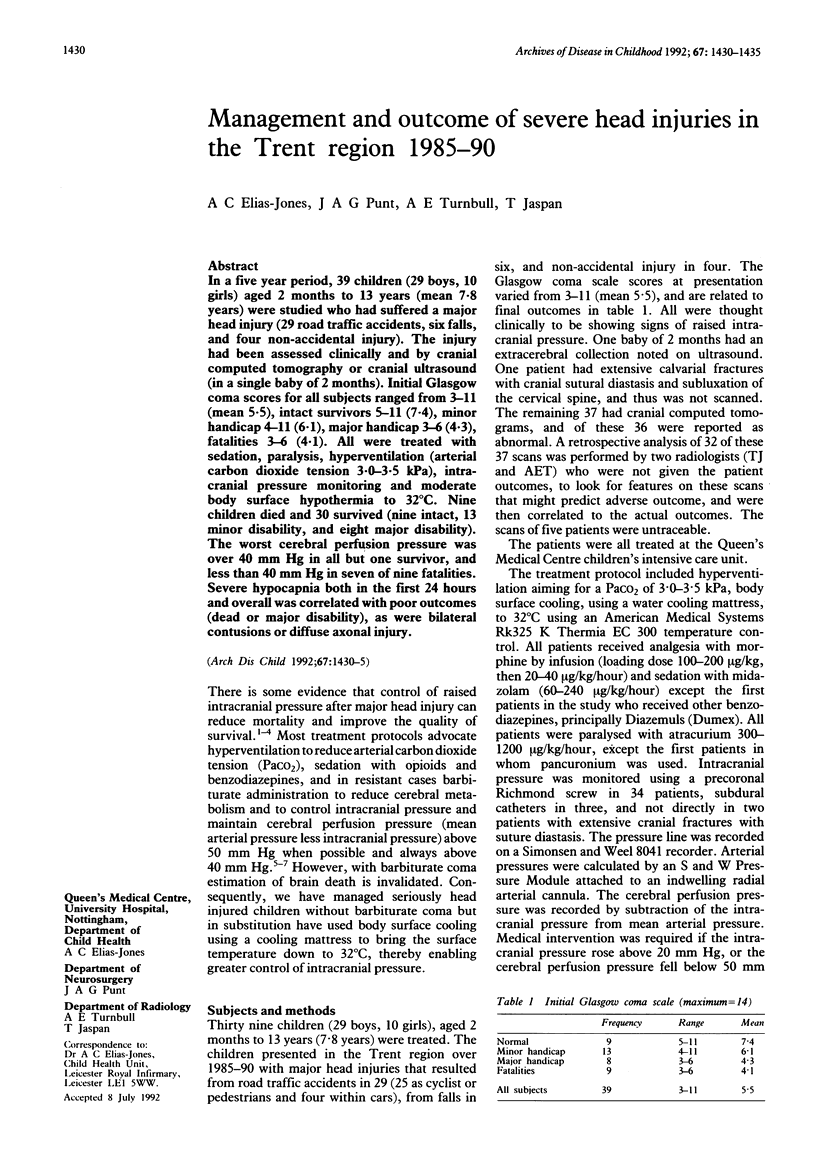
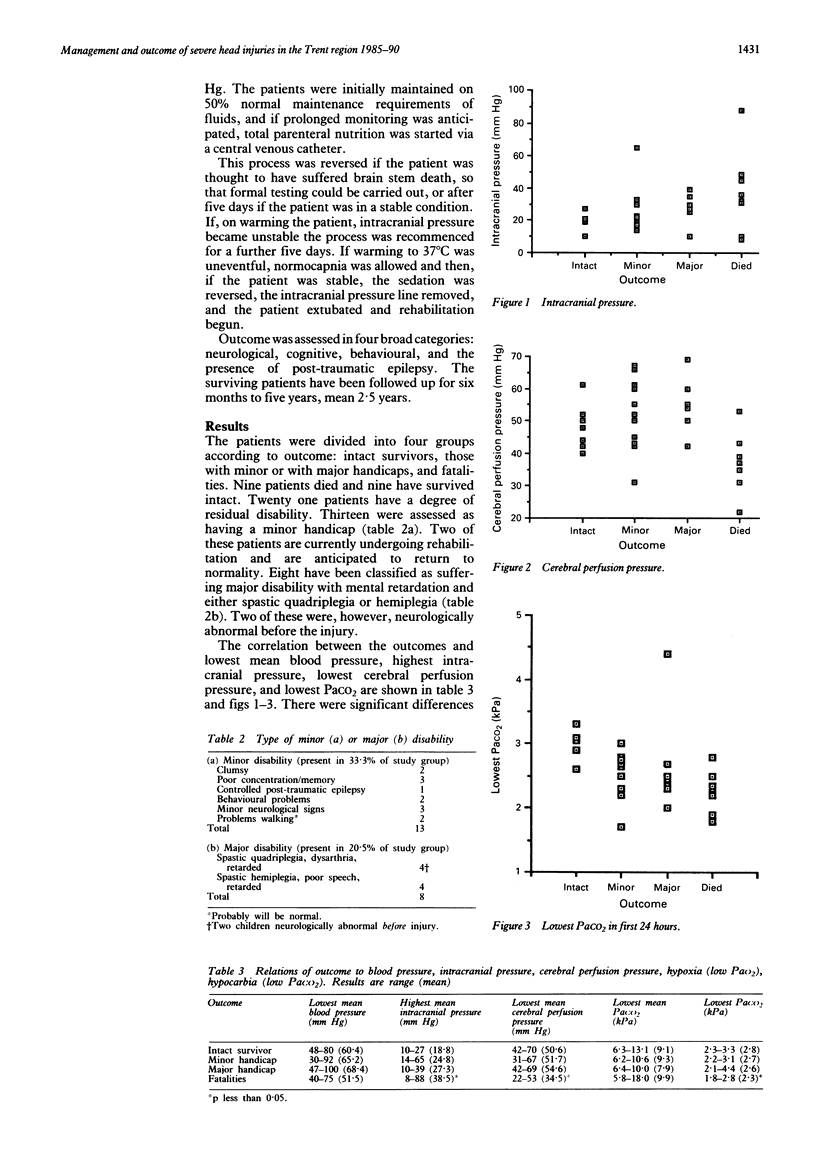
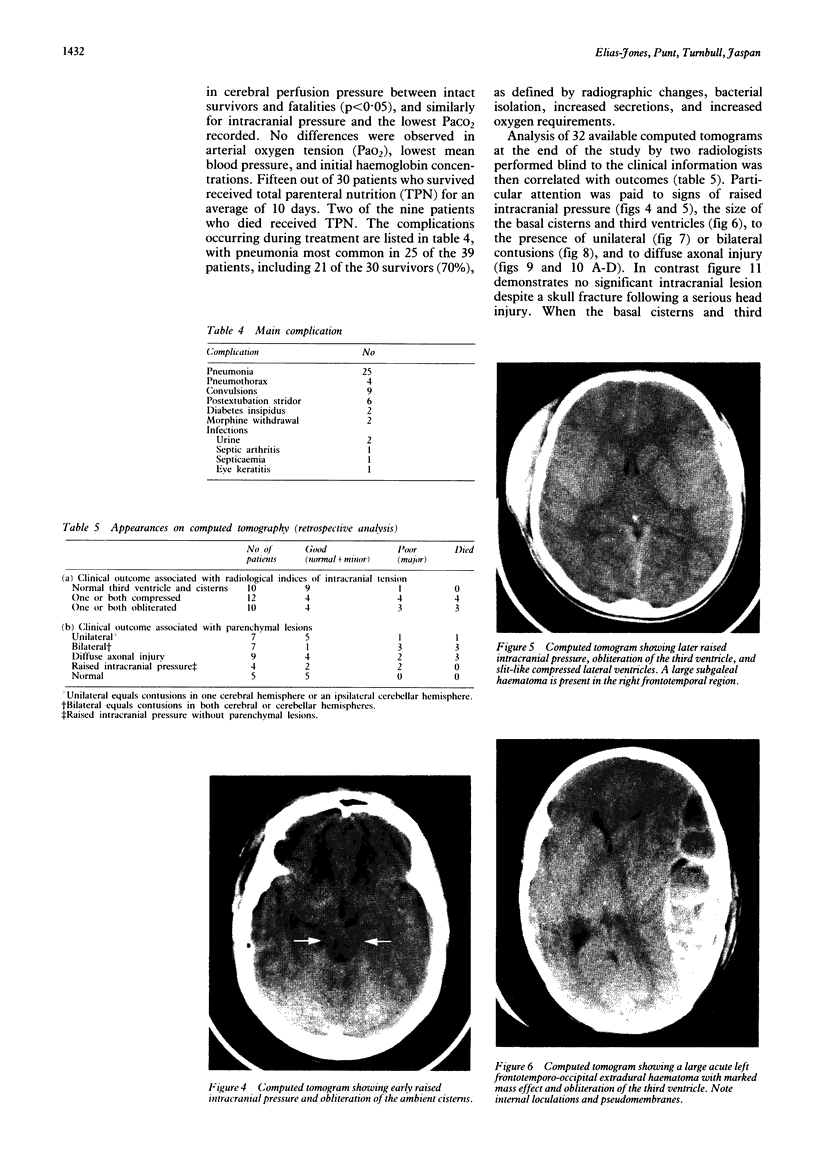
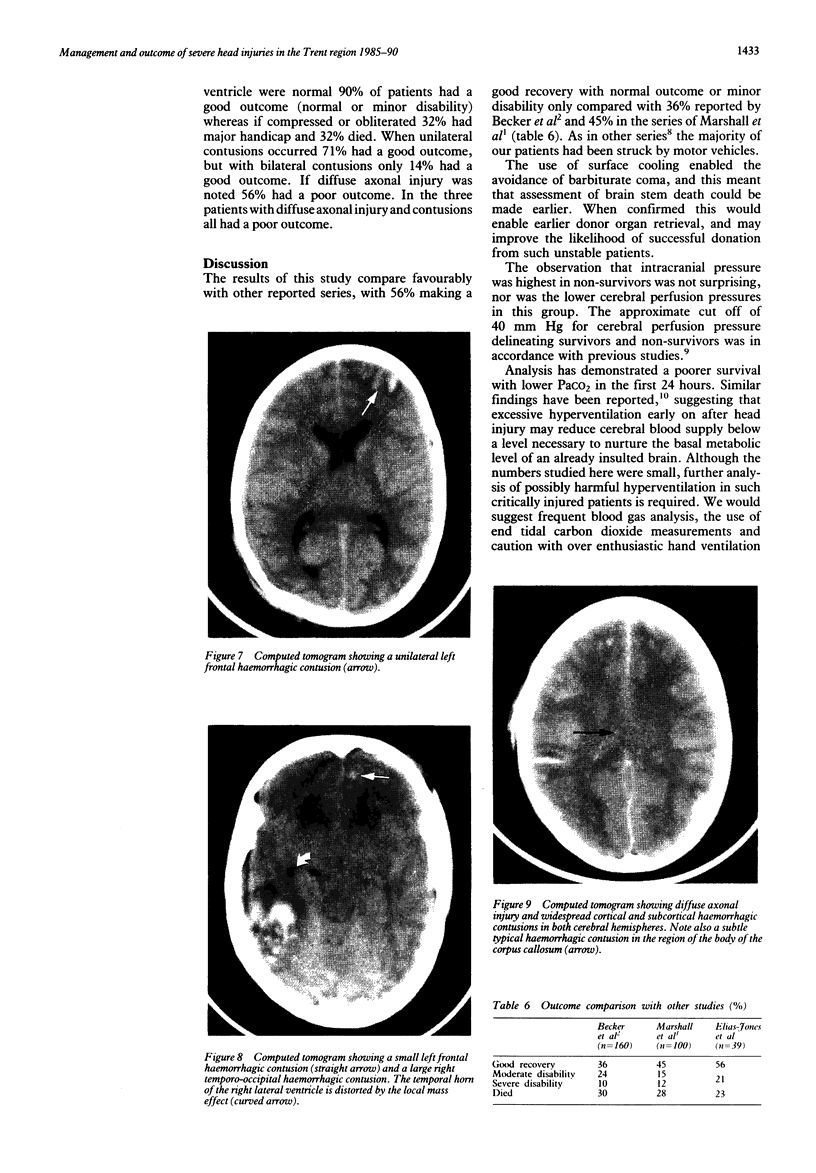
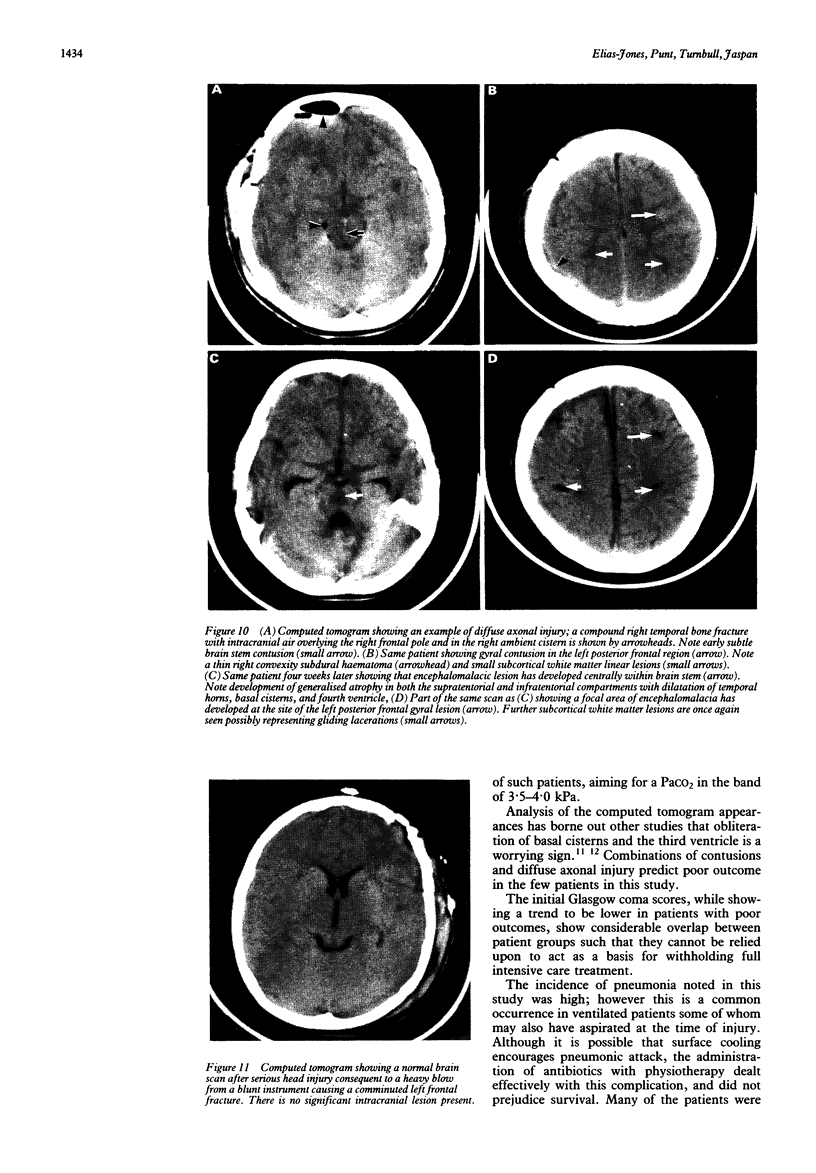
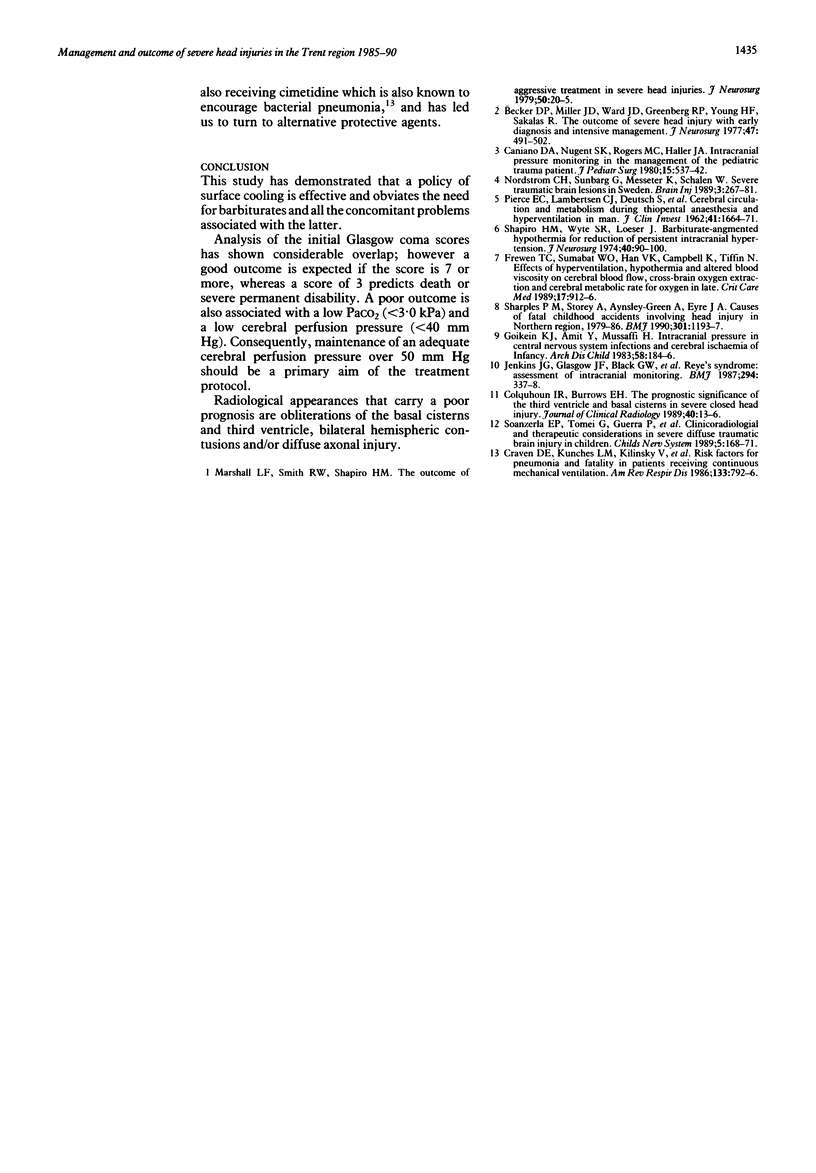
Images in this article
Selected References
These references are in PubMed. This may not be the complete list of references from this article.
- Becker D. P., Miller J. D., Ward J. D., Greenberg R. P., Young H. F., Sakalas R. The outcome from severe head injury with early diagnosis and intensive management. J Neurosurg. 1977 Oct;47(4):491–502. doi: 10.3171/jns.1977.47.4.0491. [DOI] [PubMed] [Google Scholar]
- Caniano D. A., Nugent S. K., Rogers M. C., Haller J. A. Intracranial pressure monitoring in the management of the pediatric trauma patient. J Pediatr Surg. 1980 Aug;15(4):537–542. doi: 10.1016/s0022-3468(80)80769-x. [DOI] [PubMed] [Google Scholar]
- Craven D. E., Kunches L. M., Kilinsky V., Lichtenberg D. A., Make B. J., McCabe W. R. Risk factors for pneumonia and fatality in patients receiving continuous mechanical ventilation. Am Rev Respir Dis. 1986 May;133(5):792–796. [PubMed] [Google Scholar]
- Frewen T. C., Sumabat W. O., Han V. K., Campbell K., Tiffin N. Effects of hyperventilation, hypothermia, and altered blood viscosity on cerebral blood flow, cross-brain oxygen extraction, and cerebral metabolic rate for oxygen in cats. Crit Care Med. 1989 Sep;17(9):912–916. doi: 10.1097/00003246-198909000-00015. [DOI] [PubMed] [Google Scholar]
- Goitein K. J., Amit Y., Mussaffi H. Intracranial pressure in central nervous system infections and cerebral ischaemia of infancy. Arch Dis Child. 1983 Mar;58(3):184–186. doi: 10.1136/adc.58.3.184. [DOI] [PMC free article] [PubMed] [Google Scholar]
- Jenkins J. G., Glasgow J. F., Black G. W., Fannin T. F., Hicks E. M., Keilty S. R., Crean P. M. Reye's syndrome: assessment of intracranial monitoring. Br Med J (Clin Res Ed) 1987 Feb 7;294(6568):337–338. doi: 10.1136/bmj.294.6568.337. [DOI] [PMC free article] [PubMed] [Google Scholar]
- Marshall L. F., Smith R. W., Shapiro H. M. The outcome with aggressive treatment in severe head injuries. Part I: the significance of intracranial pressure monitoring. J Neurosurg. 1979 Jan;50(1):20–25. doi: 10.3171/jns.1979.50.1.0020. [DOI] [PubMed] [Google Scholar]
- Nordström C. H., Sundbärg G., Messeter K., Schalén W. Severe traumatic brain lesions in Sweden. Part 2: Impact of aggressive neurosurgical intensive care. Brain Inj. 1989 Jul-Sep;3(3):267–281. doi: 10.3109/02699058909029640. [DOI] [PubMed] [Google Scholar]
- PIERCE E. C., Jr, LAMBERTSEN C. J., DEUTSCH S., CHASE P. E., LINDE H. W., DRIPPS R. D., PRICE H. L. Cerebral circulation and metabolism during thiopental anesthesia and hyper-ventilation in man. J Clin Invest. 1962 Aug;41:1664–1671. doi: 10.1172/JCI104623. [DOI] [PMC free article] [PubMed] [Google Scholar]
- Sganzerla E. P., Tomei G., Guerra P., Tiberio F., Rampini P. M., Gaini S. M., Villani R. M. Clinicoradiological and therapeutic considerations in severe diffuse traumatic brain injury in children. Childs Nerv Syst. 1989 Jun;5(3):168–171. doi: 10.1007/BF00272121. [DOI] [PubMed] [Google Scholar]
- Shapiro H. M., Wyte S. R., Loeser J. Barbiturate-augmented hypothermia for reduction of persistent intracranial hypertension. J Neurosurg. 1974 Jan;40(1):90–100. doi: 10.3171/jns.1974.40.1.0090. [DOI] [PubMed] [Google Scholar]



